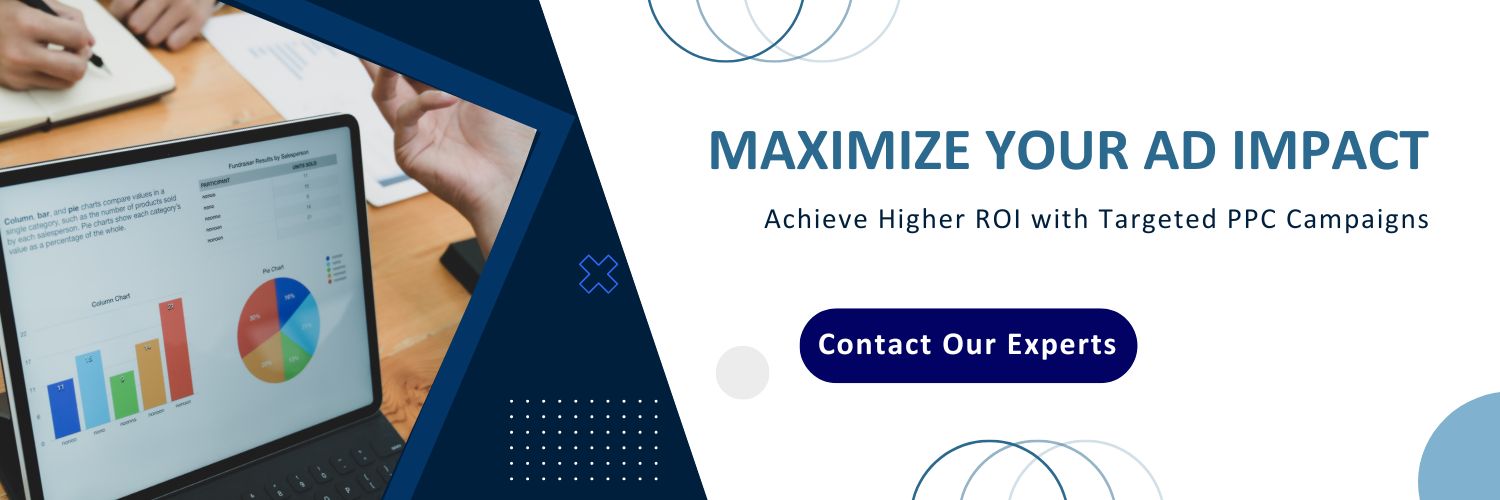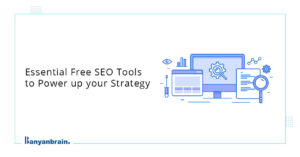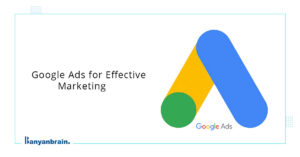Mastering Google Ads is an effective way of gaining more leads, making more sales, and increasing website traffic. Trillions of users across the globe use Google to search their queries and make purchases. Google is a diverse platform that generates leads from across the globe. Businesses often hire digital marketing agencies to run Google Ads on Google partner platforms and search engines. It may seem complex, but in this blog, we have made the concept of Google Ads easier for you. Let us learn more about the importance of Google Ads and how to run ad campaigns using Google Ads.
About Google Ads
Google Ads, or Google AdWords, is a paid platform devised by Google to display advertisements on search result pages or a webpage within the Google Display Network (GDN). Whenever users search for any query on Google, they find various ads at the top of the search results. These are Google Ads that various businesses and organizations run to promote their products and services online. Unlike search engine optimization, Google Ads is a paid marketing strategy. Businesses invest based on their budget to have their ads displayed on the search engine and rank for search queries.
Based on your search query, Google recommends the top products and services to match your interests. There is tough competition among businesses and organizations to rank their ads in the first few ads displayed for every related search query. Let us dive deeper into mastering Google Ads.
Purpose of using Google Ads
For more than two decades, Google has been the most used search engine for millions of users across the globe. People Google all their doubts to find appropriate and relevant answers to their queries. Google continuously works on improving user experience to offer the best search results.
The function of Google Ads is as follows-
- Create brand awareness – Businesses that are new and willing to create awareness about their products and services can invest in Google Ads to be discovered by relevant customers. Google Ads is the fastest way to raise awareness and brand image for global audiences.
- Generate leads – People who find the ads interesting are more likely to click on the displayed ads and are redirected to the landing page of the business website, where users can scroll through more relevant products and services. This is known as lead generation. Business websites may even ask users to make a call to action by filling out a form or subscribing to their newsletter. These leads can be nurtured to increase sales.
- Sell products – One of the prime reasons for using Google Ads is that it helps increase sales exponentially. Users with the intent of making purchases look for products and services online. If your business ad ranks high, users are likelier to click on and purchase it.
- Increase website traffic – Users are redirected to the website’s landing page by clicking on Google Ads. It helps increase website traffic, and if the landing page is completely optimized, users spend a good amount of time navigating different products and services.
Important terms used in Google Ads
When mastering Google Ads, people may come across these key terms used in Google Ads-
- Conversion – Whenever a user interacts with your Google Ads by clicking on it and then makes an action that aligns with your business objective, it is known as a conversion. For example, if the business objective is to generate leads, conversions are made if the user clicks on the ad, goes to the landing page and fills out a form, subscribes to the newsletter or makes a similar action.
- Ad Extension – Every Google Ad can be supplemented with additional information using extensions that offer more ad space to add your business contact, hyperlinks to related web pages, location and other relevant information.
- Bidding – To rank high among similar ads, you must have high-quality keywords in your ad campaigns. These keywords are gained by Google Ads bidding. The maximum bid rate is the highest amount a business is ready to pay for a single click on their ad. It is also known as the maximum cost per click (CPC).
- Bounce rate – If a user clicks on your ad and ends up on the website landing page but does not stay there for long and scrolls back within seconds, it accounts for a higher bounce rate. Landing pages must be capable of user retention to decrease the chances of users leaving the landing page or any webpage.
- Quality score – The cost of investment in bidding depends on the quality score of the ads. It is a metric devised by Google to analyze the quality of ads, assessing the ad’s click-through rate (CTR), the relevance of keywords, and the quality of the website landing page for the ad. Google’s quality score scheme is used to assess the relevance of ads and the keywords used. High-quality google ads optimization scores allow businesses to gain high-quality score keywords at a low investment. Good keywords assist businesses in having better ad rankings.
- Ad Rank – It describes the position of your ads on the search engine. Ad rank depends on the quality score determining the ad’s relevance to the user and proper usage of keywords.
- Google AdSense – It is a method where Google allows content publishers to earn money. Website owners with good traffic can make their ad space available for advertisers. Based on your content and visitors, AdSense looks for relevant ads to display on your webpage. The advertiser pays for these ads, so the price received for every ad varies.
- AdWords Express – It is a smart way of advertising ad campaigns where users can discover your ads by searching on Google Maps, listings, or by direct searches on the search engine. Other Google partnering platforms are also a part of it. It is a part of Google AdWords and benefits small businesses that want to advertise their products and services.
Benefits of Google Ads in Pay-per-click advertising
Businesses and marketers use google ads for effective advertising by investing in paid ads. The advantages of Google Ads are numerous. Let us get a detailed view of the benefits businesses can reap by mastering Google Ads.
- Display targeted ads – Advertisers can bid for relevant keywords that resonate well with their products and services; target a particular age group, location and language; have authority over how many times and at what times the ad is displayed across Google platforms; also select the devices on which you want your ads to appear. This assists businesses in achieving a more specific and targeted marketing strategy.
- Controlled investment – Since businesses have to invest for every click or impression made using the ads, Google gives control of investing according to your budget. Advertisers get to control their expenses and choose how much they want to invest hourly, daily or monthly. They can even scale their bid.
- Tracking Google Ads – Using marketing tools such as Google Analytics, businesses can keep track of the performance of Google Ads. By measuring metrics such as number of clicks, impressions, nature of conversion, and return on investment, advertisers can readvertise using new ad campaigns to achieve their business goals.
- Massive outreach – Google is a commonly used global search engine where millions of searches are made daily. This increases the chances of unknown users discovering your ads by entering related keywords or phrases. Therefore, investing in Google Ads allows businesses to expand their brand globally and expect a higher sales volume.
Types of Google Ads Campaigns
- Search campaigns – These display text-based ads on search engines that appear once the user enters related search queries. Therefore, search campaigns rely on the correct choice of keywords related to products and services.
- Display campaigns – Advertisers can display their ads in the form of text, videos and images across millions of websites on Google. Display campaigns help increase brand awareness as diverse audiences engage with different websites daily.
- Video campaigns – Video ads can be displayed on Google partner platform YouTube to get diverse audiences to know about your products and services.
- App campaign – You can use Google Ads to promote apps on Google Play Store, YouTube and search engines.
Step-by-step guide for Mastering Google Ads
You must consider the following steps for mastering Google Ads and creating an effective Google Ads campaign.
- Create an account – To create an account on Google Ads, sign in with an existing Google account or create a new one. After signing in, you will have to fill out your business objective. Further, you can click “switch to expert mode” to continue.
- Choosing your campaign type – Based on the business objective, which can vary from making sales, lead generation, increasing website traffic, brand awareness, or app promotion. It is better to have an objective to select the right type of ad campaign. You can even continue without selecting a business objective. Choose between the six types of ad campaigns, and then proceed where Google will ask you about the results you expect from the ad campaign. You can choose from the options given – website visits, calls, or app downloads. Google Ads also allows leaving the result section blank to have more manual control over the ads.
- Choosing a network – Enter the general settings and give your campaign a name. After this, you can choose a network where you want your ads to appear – search and display. Select the ‘search’ campaign to proceed. Now, you can move to your targeting options where you need to enter the location, and language most used by your target audience. Then, you need to set a budget that you can spend each day on your ad campaign.
- Setting ad schedule – Keeping in mind the differences in time zones of your target audience, and the hours in which ads are less likely to gain user attention, schedule your ads. To pick an ad schedule, click on “show more settings”, and then schedule the ads.
- Bid strategy – Google allows both manual and automated bidding strategies for the results you wish to see from your ad campaigns, such as conversions, impressions, and clicks. Selecting a result will lead to automated bidding, where Google will select your bid strategy. Go to ‘select a bid strategy directly from where you will get a long list of bidding strategies such as target cost per acquisition, target return on ad spend, maximize clicks, maximize conversions and target impression share. This is followed by filling in other details related to business in ad extensions and call extensions.
- Creating an ad group – Once keyword bidding is complete, you can arrange your ads and keywords as ad groups, which keeps your ad campaign more organised. Use keyword research tools such as Google Planner to club related keywords and phrases for the ad campaign. This helps strategise the ad campaign based on the month’s keyword volume.
- Settings keyword match type – You need to set a match type after entering keywords. A broad match type allows your ads to appear when users search for related keywords. Phrase match displays your ad for phrases with the same meaning as your keywords. An exact match pops your ad up when the user query has a meaning identical to yours.
- Device targeting – Based on your ideal buyer persona, locate the type of device that the audience uses the most. Most people use mobiles, so ad campaigns must be optimised to run smoothly on mobiles.
- Optimise landing page – It is an essential element of running Google Ads. Conversions are made only if the landing page is compelling and can retain users. The landing page of a website must have a good loading speed, be easily navigable, and include a CTA button.
Mastering Google Ads has been made easier by following the step-by-step guide that allows businesses to post Google Ads.
Banyanbrain Digital Pvt Ltd is a digital marketing agency in Gurgaon that offers global marketing solutions. Our team is experienced and skilled to cater to all digital marketing services, including SEO services and paid marketing.







